Bento, a traditional Japanese meal in the form of a meal box, is much more than just a snack to take away. It embodies the culinary culture of Japan, combining delicate flavors, artistic presentation and nutritional balance. This ultimate guide to bento in Japan will take you on a taste journey through the essential aspects of preparing this delicious meal box.
HOW TO FIND THE RIGHT BENTO BOX?
Finding the perfect bento box is a crucial step in preparing balanced and delicious meals. In Japan, there is an astonishing variety of bento boxes, each with its own characteristics and benefits. Here are some things to consider when choosing the perfect bento box:
-
Size and capacity: The size of the bento box is a determining factor, so if you are planning generous portions, opt for a larger box. However, for everyday use or for children, a medium-sized box may be more practical. Some bento boxes are compartmentalized to allow you to separate different types of foods.
-
Material: Bento boxes are made of various materials, including plastic, stainless steel, wood and ceramic. Each material has its advantages: plastic boxes are lightweight, easy to clean and airtight, stainless steel boxes are durable and retain heat well, wooden boxes add a traditional touch to your meal, while wooden boxes add a traditional touch to your meal. Ceramic boxes are elegant, but more fragile.
-
Airtightness: It is essential to choose an airtight bento box to prevent leaks and guarantee the freshness of your food. Make sure the lid fits snugly and the compartments are leak-proof.
-
Ease of use: Some bento boxes are equipped with clip closures, handles or removable dividers. Choose a box that fits your lifestyle and how you plan to use your bento.
-
Maintenance: Ease of cleaning is a factor to consider. Plastic bento boxes are generally the easiest to maintain, as they are dishwasher safe. Wooden or ceramic boxes require more delicate cleaning by hand.
-
Style and aesthetics: Finally, don't forget the aesthetic factor, bento boxes come in a multitude of colors, patterns and designs. Choose a box that reflects your personal taste and inspires you to prepare mouth-watering meals.
Ultimately, the bento box you choose will depend on your individual preferences and how you plan to use your bento. Whatever you choose, make sure your bento box makes preparing and enjoying your meals as enjoyable as possible.

UTENSILS TO PREPARE YOUR BENTO
Preparing bento requires a few basic utensils to make the process smoother and more fun. Here is a list of essential tools you will need to have on hand when making your bento:
-
Rice molds (Onigiri-shaper): Rice molds are practical tools for shaping rice into small balls, triangles (onigiri) or other fun shapes. They add a fun touch to your bento and make it easier to prepare onigiri, which are a staple of Japanese bentos.
-
Food cutters (kamaboko-nomi): Shaped cutters are perfect for creating cute, decorative foods from vegetables, omelets or meats. They are commonly used to cut carrot slices into flower shapes, nori stars or to make fun shapes with sausages.
-
Chopsticks or spoon (Renge): Chopsticks are the utensil of choice for eating bento in Japan. They are practical, reusable and available in a wide variety of designs and materials. However, a spoon may be more suitable for certain dishes in your bento, so choose the utensil that suits you best.
-
Small jar for soy sauce or wasabi: To add extra flavors to your bento, it may be helpful to bring a small jar for soy sauce, wasabi or any other sauce you like . This will allow you to season your dishes according to your preferences, without risking making them soggy.
-
Nori Sheets: Sheets of nori (dried seaweed) are often used to wrap onigiri or to cut out fun designs to use as garnish. They'll add flavor and texture to your bento in no time.
-
Cupcake Liners: Although it may seem unusual, cupcake wrappers are handy for keeping foods separated in your bento. They prevent food from touching each other, while adding a pop of color.
-
Disposable gloves: If you prepare sushi or onigiri with your hands, disposable gloves can be handy to prevent rice from sticking to your fingers and make it easier to handle the ingredients.
-
Food-grade plastic sheet (saran wrap): A sheet of food-grade plastic is ideal for wrapping food, keeping it fresh and preventing sauces from leaking.
These utensils are designed to simplify your bento preparation, while allowing you to create delicious and aesthetically pleasing meals. With the right equipment, your bento making experience will be even more enjoyable.

WHAT PROPORTIONS FOR MY BENTO?
One of the essential aspects of preparing a balanced bento is respecting the right proportions to ensure a nutritious and delicious meal. The Japanese have a traditional approach to the composition of their bento, focusing on the main food groups and creating taste harmony. Here are the generally recommended proportions for a balanced bento:
-
40% starchy foods: Starchy foods are the base of your bento, this can be rice, soba noodles, onigiri (rice balls) or special breads (like melonpan). Starchy foods provide lasting energy and make up the majority of your meal.
-
30% protein: Protein is essential for maintaining your energy throughout the day. Include foods like fish, chicken, tofu, eggs or shrimp tempura for this portion of your bento. Protein adds flavor and variety to your meal.
-
20% vegetables: Vegetables bring color, essential nutrients and freshness to your bento. The Japanese often use stir-fried vegetables, pickles (marinated vegetables) or vegetable garnishes for this part. This is an opportunity to experiment with a variety of flavors and textures.
-
10% fruit: For a sweet and refreshing touch, add fruit to your bento. Sliced fruit, orange wedges, berries or pieces of melon are popular choices, providing a slightly sweet end to the meal.
It is important to note that these proportions are not strict and can be adjusted according to your personal preferences. For example, if you prefer a bento richer in vegetables, you can increase the portion of vegetables while slightly reducing the starches. The goal is to create a balance between these four components for a complete and satisfying meal.
By following these proportions, your bento will not only be nutritionally balanced, but also visually appealing, with a variety of colors and textures.

EXAMPLE OF BALANCED BENTO: PRACTICAL CASE
A balanced bento could include:
-
Sushi and maki: Sushi and maki are popular choices for bento. They provide proteins (fish or seafood), carbohydrates (rice) and vegetables (nori seaweed).
-
Cole Salad: A fresh, crunchy coleslaw with a light dressing, it will add vegetables and freshness to your meal.
-
Onigiri: Triangular or round rice balls, garnished with different flavors such as grilled salmon, salted plum (umeboshi) or tuna. They are an excellent source of carbohydrates.
-
Sautéed Vegetables: Pan-fried vegetables, such as green beans, carrots and peppers, seasoned with soy sauce. They will provide a crunchy texture and nutrients to your dish.
-
Fresh fruit: Slices of melon, watermelon or kiwi to add a sweet touch to your bento.
-
Tamagoyaki: A sweet and fluffy Japanese omelette, cut into slices, it will provide another source of protein.
-
Japanese pickles (tsukemono): Pickled vegetables like radishes, ginger or cucumbers to add variety of flavors.
-
Nori (dried seaweed): Sheets of nori to wrap onigiri or to add decorative designs to your bento.
-
Small cakes (wagashi): Traditional Japanese sweets, like mochi, for a sweet touch at the end of your meal.
This balanced composition ensures a variety of flavors, textures and nutrients in your bento. You can customize the ingredients according to your preferences, but keep in mind the recommended proportions for a healthy and balanced meal.

COMPOSE YOUR BENTO WITH HARMONY
Composition of a bento is not just about arranging the food, but also creating a visually pleasing aesthetic. The Japanese attach great importance to the harmony of colors, shapes and textures in their bento. Here are some tips for putting together a bento with harmony:
-
Variety of colors: Using different colors makes the bento more attractive. Pair vegetables of different hues, like bright orange carrots, dark green spinach, and red peppers to add vibrancy to your meal.
-
Contrast of textures: Incorporate ingredients with varied textures. For example, crunchy vegetables, tender fish, soft eggs and sticky rice. This creates a rich taste experience.
-
Decorative patterns: The Japanese sometimes use food cutouts to create fun patterns and shapes. Vegetables can be cut into the shapes of flowers, animals or geometric patterns.
-
Using nori: Sheets of nori seaweed can be cut to add designs and patterns to your onigiri or other foods. This will add an artistic touch to your bento.
-
The art of the bento box: Bento boxes are designed to help separate different foods, creating a neat presentation. Compartments can be used to organize different items aesthetically.
-
Little details: Add small details, like sesame seeds, fresh herbs or edible toppings, to add finesse and flavor to your bento.
The goal is to make each bento a true visual masterpiece. The Japanese believe that beautiful presentation enhances the taste experience, making each meal more enjoyable. By composing your bento harmoniously, you will transform a simple lunch into an edible work of art.
Now let's conclude! Bento is much more than just a takeaway meal; it is a celebration of Japanese cuisine, nutritional balance and the art of presentation. By following this guide, you will be able to prepare delicious and balanced bentos that will awaken your taste buds and delight your eyes. Bento is an invitation to explore the richness of Japanese culinary culture and create meals that are both delicious and aesthetically pleasing. Enjoy your food !
















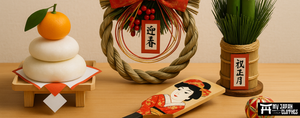
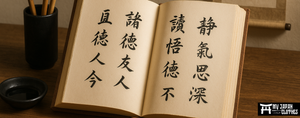



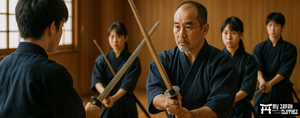



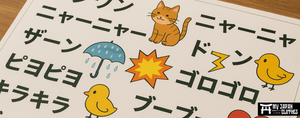


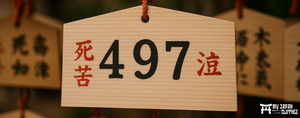
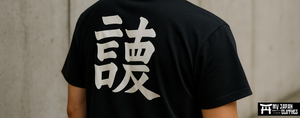

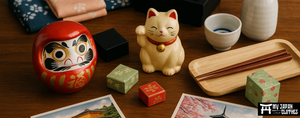
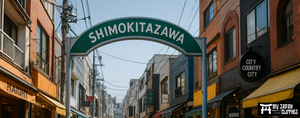



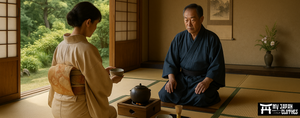
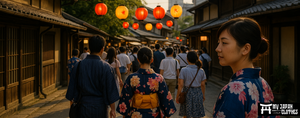



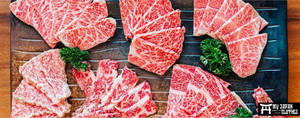
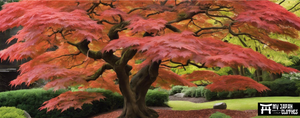



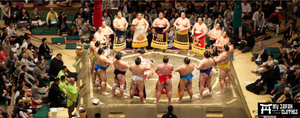




Leave a comment